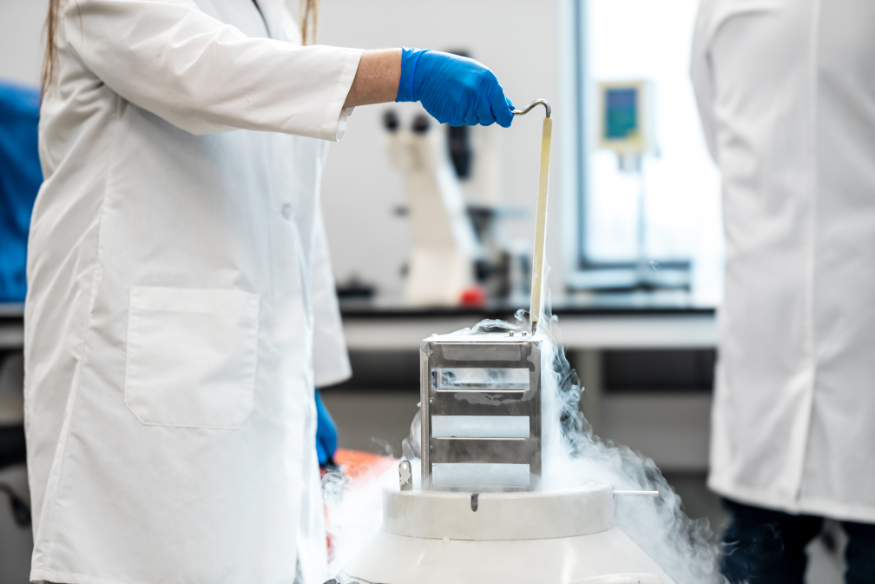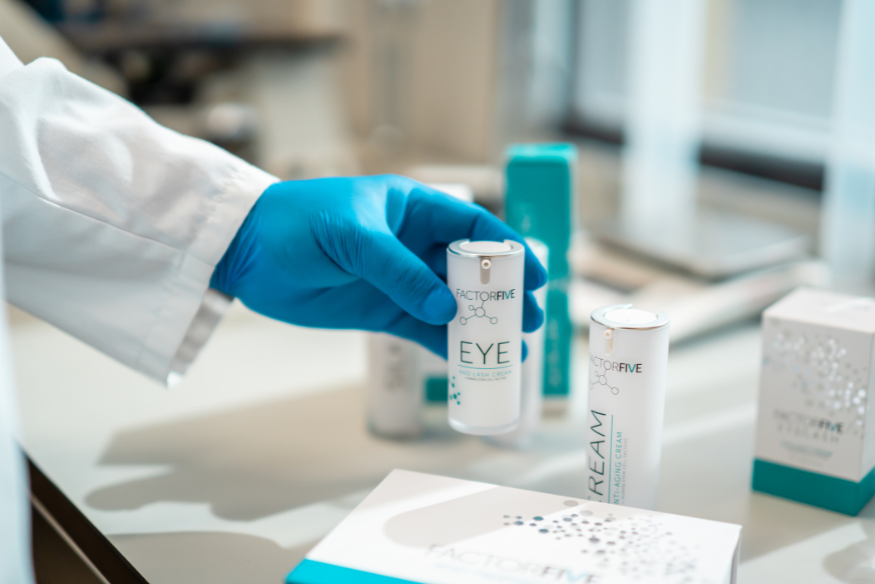
Clinical
Radiofrequency and Non-RF Microneedling Safety: What Patients Should Know
With Molly Muecke, RN, MSN, NP-CMicroneedling is a popular aesthetic treatment offered in 79% of med spas (2024 Medical Spa ...
Posted By Madilyn Moeller, Friday, October 25, 2024

By FACTORFIVE Skincare
Aging is an inevitable part of life that impacts every organ in our body, including our skin. As the body's largest organ, skin plays a crucial role in protection, hydration and sensation. But, over time, our skin, like other organs, begins to deteriorate due to both intrinsic (internal) and extrinsic (external) factors.
Luckily, advancements in skin care have led to the development of human stem cell proteins, which offer promising benefits for maintaining healthier, more youthful skin. This post will explore how aging affects the skin and the unique role that human stem cell proteins play in combating these effects.
Aging is a complex process influenced by intrinsic factors, such as genetics and hormonal changes, and extrinsic factors, such as diet, stress and environmental exposures. Together, these elements contribute to the gradual breakdown of cellular communication and function, which becomes especially apparent in our skin.

Together, these aging forces lead to thinner, drier skin that is less capable of maintaining its structure and function.
Our skin is composed of three layers: the epidermis (outer layer), the dermis (middle layer) and the hypodermis (innermost layer). Aging impacts each of these layers in unique ways:
Aging skin produces less collagen, elastin and hyaluronic acid, which are critical for maintaining a youthful appearance. Additionally, the production of antioxidants slows down, leaving skin more vulnerable to reactive oxygen species (ROS), which are unstable molecules formed from oxygen that can damage cells, proteins and DNA.
Stem cells are remarkable cells that can develop into specialized cells and aid in tissue repair and regeneration. In the skin, ADMSCs play a vital role in maintaining tissue homeostasis and fighting the effects of aging. However, as we age, these stem cells become less effective, and their numbers dwindle.

ADMSCs secrete proteins that have been shown to have multiple benefits for aging skin. These proteins, collectively known as human stem cell proteins, can:
While other anti-aging treatments, such as hormone replacement therapy and retinoid treatments, offer benefits, they also can carry risks and potential side effects. Human stem cell proteins provide a safer alternative with powerful regenerative capabilities that align closely with the skin's natural processes.
Research indicates that human stem cell proteins offer unique advantages in promoting skin health and combating signs of aging. Here are some of the key benefits:
Reduced appearance of wrinkles and fine lines: By boosting collagen and elastin production, human stem cell proteins can visibly improve skin texture and reduce the appearance of wrinkles, creating a smoother, firmer look.
Enhanced skin hydration: These proteins stimulate the production of hyaluronic acid, a natural humectant that helps retain moisture. Well-hydrated skin appears plumper and more youthful.
Improved skin tone and pigmentation: The growth factors in human stem cell proteins can help even out skin tone and minimize age spots by supporting the repair of damaged melanocytes.
Increased skin elasticity and resilience: Human stem cell proteins strengthen the skin's extracellular matrix, enhancing its ability to bounce back from daily wear and tear.

FACTORFIVE Skincare recognizes the incredible potential of human stem cell proteins to revolutionize anti-aging skin care. Its products are developed using these cutting-edge ingredients to help restore and rejuvenate aging skin. By focusing on the science of aging and leveraging the benefits of human stem cell proteins, FACTORFIVE Skincare is dedicated to providing products that address the root causes of skin aging, not just the symptoms.
Whether you’re looking to reduce fine lines, improve skin elasticity or enhance hydration, FACTORFIVE Skincare has a solution designed to meet your needs. Experience the difference of advanced skin care backed by science and see how human stem cell proteins can transform your skincare routine.

Content sourced for this article was originally published in this article, co-written by FACTORFIVE scientists David Stachura and Kristen Rueb.
FACTORFIVE Skincare is a science-driven skincare brand at the forefront of regenerative medicine. By harnessing the power of ethically derived human stem cells, FACTORFIVE has developed advanced anti-aging products that target the signs of aging at the cellular level. Each formula is designed to improve skin health and appearance, utilizing growth factors and peptides that work synergistically to promote youthful, radiant skin. With a commitment to innovation, ethical sourcing, and clinical efficacy, FACTORFIVE Skincare is revolutionizing the beauty industry by offering products that deliver real, noticeable results.
Related Tags
Medical spa news, blogs and updates sent directly to your inbox.

Clinical
With Molly Muecke, RN, MSN, NP-CMicroneedling is a popular aesthetic treatment offered in 79% of med spas (2024 Medical Spa ...

Clinical
On November 5, 2025, Merz Aesthetics announced that Ultherapy PRIME® gained U.S. Food and Drug Administration (FDA) clearance to improve ...

Clinical
By Belmar Pharma SolutionsWhen it comes to menopause, a once-taboo topic, the tide has finally changed. Women now have access ...

Clinical
The FDA’s recent safety communication regarding radiofrequency (RF) microneedling devices is a critical reminder: Aesthetic treatments involving energy-based devices are ...